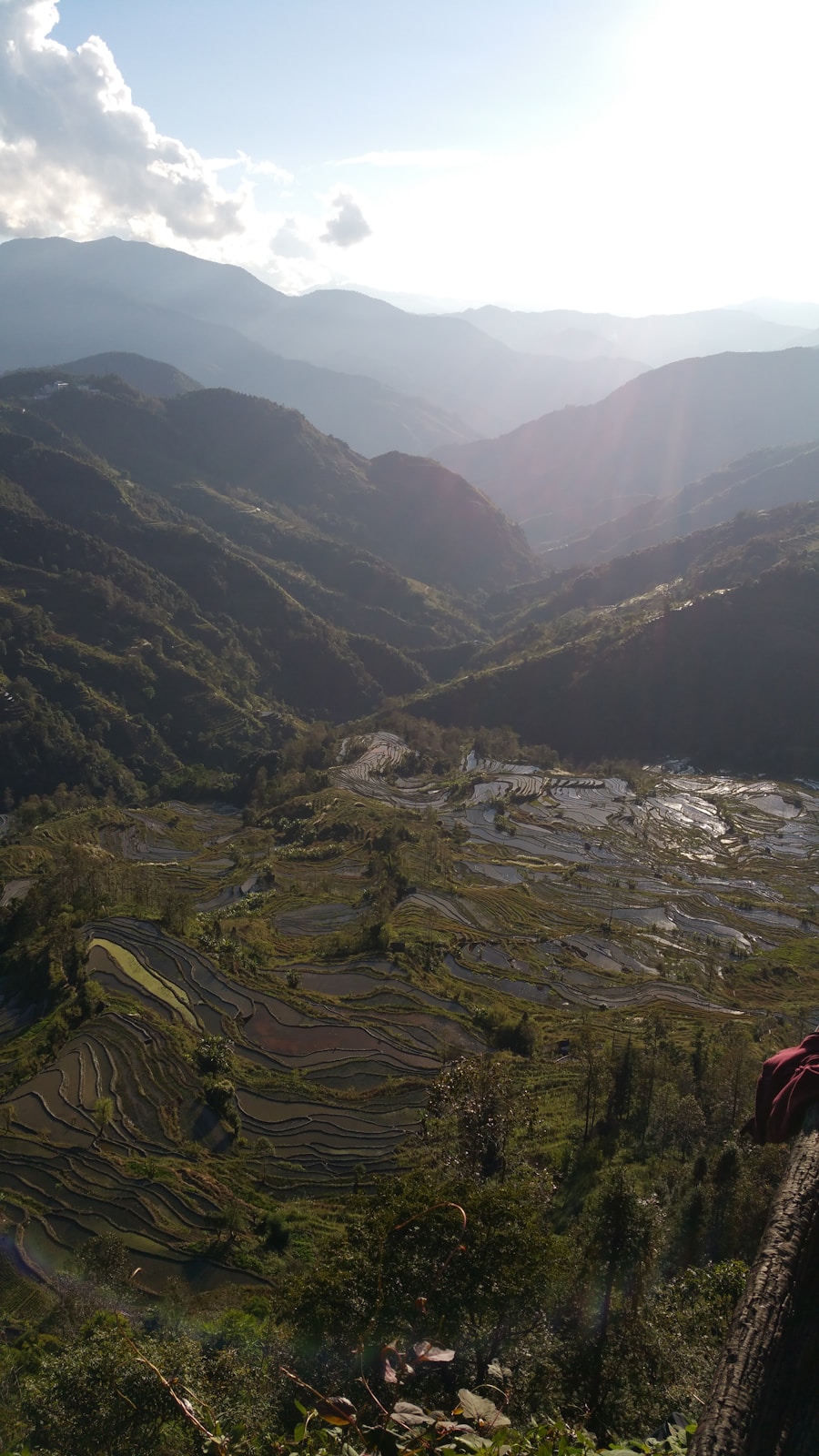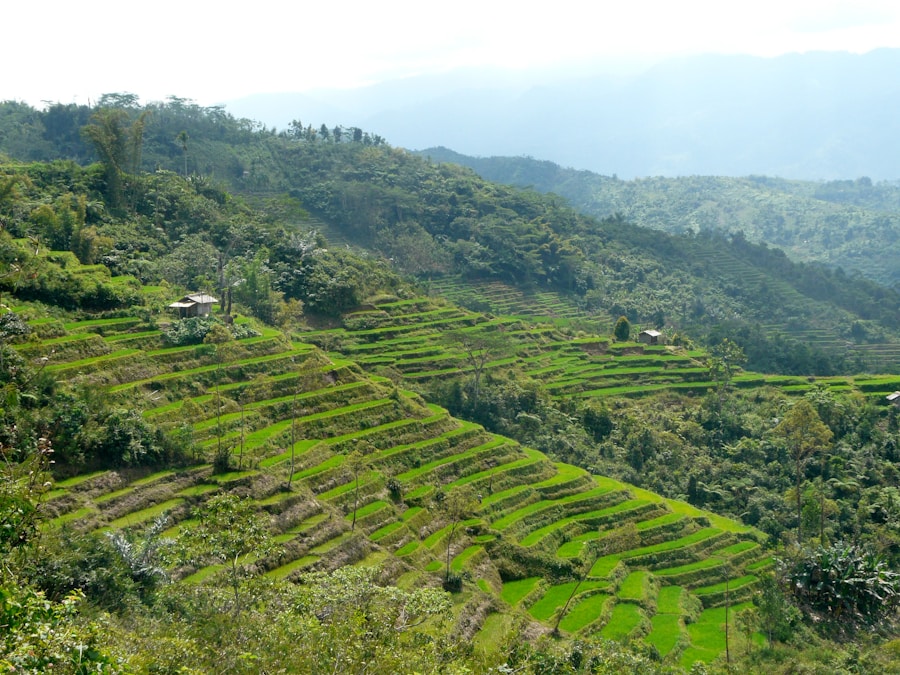Download links
How to install Banaue Rice Terraces: A Cultural Wonder APK?
1. Tap the downloaded Banaue Rice Terraces: A Cultural Wonder APK file.
2. Touch install.
3. Follow the steps on the screen.
Description
The Banaue Rice Terraces, often referred to as the “Eighth Wonder of the World,” are a remarkable feat of engineering and agriculture that date back over 2,000 years. These terraces were carved into the mountains of Ifugao province in the Philippines by the indigenous Ifugao people, who developed sophisticated farming techniques to cultivate rice in a challenging mountainous environment. The origins of these terraces are steeped in the rich cultural heritage of the Ifugao, who have lived in harmony with their land for centuries.
Historical accounts suggest that the construction of the terraces began around 2000 B.C., although some estimates push this date even further back, indicating a long-standing tradition of rice cultivation in the region. The construction of the terraces was not merely a practical endeavor; it was also deeply intertwined with the spiritual beliefs and social structures of the Ifugao people. The terraces were built using only rudimentary tools, yet they reflect an intricate understanding of the local ecosystem and hydrology.
The Ifugao utilized a system of irrigation that diverted water from nearby rivers and streams, allowing them to sustain their crops throughout the year. This agricultural innovation not only provided food security but also fostered a sense of community among the Ifugao, as the construction and maintenance of the terraces required collective effort and cooperation.
Key Takeaways
- The Banaue Rice Terraces were built over 2,000 years ago by the Ifugao people, making them one of the oldest and most remarkable cultural landscapes in the Philippines.
- The terraces are not only a source of livelihood for the Ifugao people, but also a symbol of their identity, unity, and sustainable agricultural practices.
- The construction of the terraces involved intricate engineering techniques such as stone-walling, irrigation, and water distribution systems, showcasing the Ifugao’s advanced knowledge of agriculture and land management.
- Despite being a UNESCO World Heritage Site, the Banaue Rice Terraces face challenges such as environmental degradation, lack of maintenance, and the migration of younger generations to urban areas.
- While tourism has brought economic opportunities to the local community, it has also led to issues such as overdevelopment, cultural commodification, and environmental impact, posing a threat to the preservation of the terraces.
The Cultural Significance of the Banaue Rice Terraces to the Ifugao People
The Banaue Rice Terraces hold profound cultural significance for the Ifugao people, serving as a symbol of their identity, heritage, and resilience. For generations, these terraces have been more than just agricultural fields; they represent a way of life that is intricately linked to their customs, traditions, and social structures. The Ifugao view rice not only as a staple food but also as a sacred element in their rituals and ceremonies.
Moreover, the terraces are a testament to the Ifugao’s deep-rooted relationship with nature. The construction and maintenance of these terraces require an understanding of environmental stewardship, as they must balance agricultural needs with ecological sustainability.
This relationship is reflected in their traditional beliefs, which emphasize respect for nature and the importance of preserving their ancestral lands. The terraces serve as a living cultural landscape that embodies the Ifugao’s values, showcasing their ingenuity and adaptability in the face of environmental challenges.
The Engineering and Agricultural Techniques Used to Construct the Banaue Rice Terraces

The engineering techniques employed in constructing the Banaue Rice Terraces are nothing short of extraordinary. The terraces were built using locally sourced materials such as stone, mud, and bamboo, demonstrating a remarkable understanding of geology and hydrology. The Ifugao people meticulously shaped the mountainsides into a series of flat steps, creating a cascading effect that maximizes arable land while minimizing soil erosion.
Each terrace is supported by stone walls that not only hold back soil but also serve to channel water effectively throughout the system. Agriculturally, the Ifugao developed innovative practices that allowed them to cultivate rice in this challenging terrain. They implemented a system of crop rotation and intercropping, which enhanced soil fertility and reduced pest infestations.
Additionally, they utilized organic fertilizers derived from local plants and animal manure to enrich the soil without relying on synthetic chemicals. This sustainable approach to agriculture has allowed them to maintain productivity over centuries while preserving the ecological balance of their environment. Source: National Geographic
The Preservation Efforts and Challenges Facing the Banaue Rice Terraces
| Challenges | Efforts |
|---|---|
| Soil Erosion | Implementation of terrace wall maintenance and repair |
| Declining Number of Rice Farmers | Government support for rice farming and terrace maintenance |
| Tourism Impact | Development of sustainable tourism practices |
| Climate Change | Adoption of climate-resilient farming techniques |
Despite their historical and cultural significance, the Banaue Rice Terraces face numerous challenges that threaten their preservation. One major issue is climate change, which has led to unpredictable weather patterns, including prolonged droughts and heavy rainfall. These changes can cause soil erosion, landslides, and damage to the intricate irrigation systems that are vital for rice cultivation.
As traditional farming practices become increasingly difficult to sustain under these conditions, there is a growing concern that younger generations may abandon rice farming in favor of more lucrative employment opportunities in urban areas. Efforts to preserve the terraces have been initiated by both local communities and international organizations. The Philippine government has recognized the importance of these terraces as a UNESCO World Heritage Site and has implemented various programs aimed at conservation and sustainable tourism development.
Local initiatives often involve community engagement, where elders share traditional knowledge with younger generations to ensure that agricultural practices are passed down. However, these efforts face obstacles such as limited funding, lack of technical support, and competing interests from commercial development.
The Impact of Tourism on the Banaue Rice Terraces and the Local Community
Tourism has emerged as a double-edged sword for the Banaue Rice Terraces and the surrounding communities. On one hand, it provides an essential source of income for local residents who offer services such as guided tours, homestays, and handicrafts. The influx of visitors has raised awareness about the cultural significance of the terraces and has led to increased funding for preservation efforts.
Many locals have embraced tourism as an opportunity to showcase their heritage while benefiting economically from their unique landscape. On the other hand, unchecked tourism can lead to environmental degradation and cultural commodification. The influx of tourists can strain local resources, leading to issues such as waste management problems and increased pressure on fragile ecosystems.
Additionally, there is a risk that traditional practices may be diluted or altered to cater to tourist expectations, potentially eroding the authenticity of Ifugao culture. Striking a balance between promoting tourism and preserving cultural integrity remains a significant challenge for local communities.
The Future of the Banaue Rice Terraces as a UNESCO World Heritage Site

Preserving Cultural Significance
As a UNESCO World Heritage Site since 1995, the future of the Banaue Rice Terraces hinges on effective management strategies that prioritize both conservation and community involvement. UNESCO’s designation has brought international attention to these terraces, highlighting their cultural significance and encouraging global support for preservation efforts.
Sustainable Solutions for the Future
Looking ahead, innovative approaches that integrate modern technology with traditional practices may offer solutions for sustainable agriculture in the terraces. For instance, utilizing drone technology for monitoring crop health or implementing rainwater harvesting systems could enhance resilience against climate variability. Furthermore, fostering partnerships between local communities, government agencies, and NGOs can create a collaborative framework for sustainable development that respects cultural heritage while promoting economic growth.
A Brighter Future Ahead
In conclusion, while challenges abound for the Banaue Rice Terraces, there is also hope for their future as a living testament to human ingenuity and cultural heritage. By embracing sustainable practices and fostering community involvement, it is possible to ensure that these iconic landscapes continue to thrive for generations to come.
If you’re interested in exploring more about online games and apps, you should check out the article “Unleash the Fun with TG777 Online Games”. This article discusses the excitement and entertainment that can be found in online gaming, which can be a great way to unwind after a day of exploring destinations like the Banaue Rice Terraces.
FAQs
What are the Banaue Rice Terraces?
The Banaue Rice Terraces are ancient terraces carved into the mountains of Ifugao in the Philippines. They are often referred to as the “Eighth Wonder of the World” and are a UNESCO World Heritage Site.
How were the Banaue Rice Terraces created?
The terraces were hand-carved by the Ifugao people over 2,000 years ago using minimal equipment. They were created to make the mountainous terrain suitable for rice cultivation.
What is the significance of the Banaue Rice Terraces?
The terraces are a symbol of the ingenuity and sustainable agricultural practices of the Ifugao people. They also serve as a testament to their cultural heritage and traditional farming methods.
How large are the Banaue Rice Terraces?
The terraces cover approximately 10,360 square kilometers of mountainside and are estimated to stretch about 20,000 kilometers if laid end to end.
Can visitors explore the Banaue Rice Terraces?
Yes, visitors can explore the terraces and even hike through them. There are also local guides available to provide tours and information about the history and significance of the terraces.





